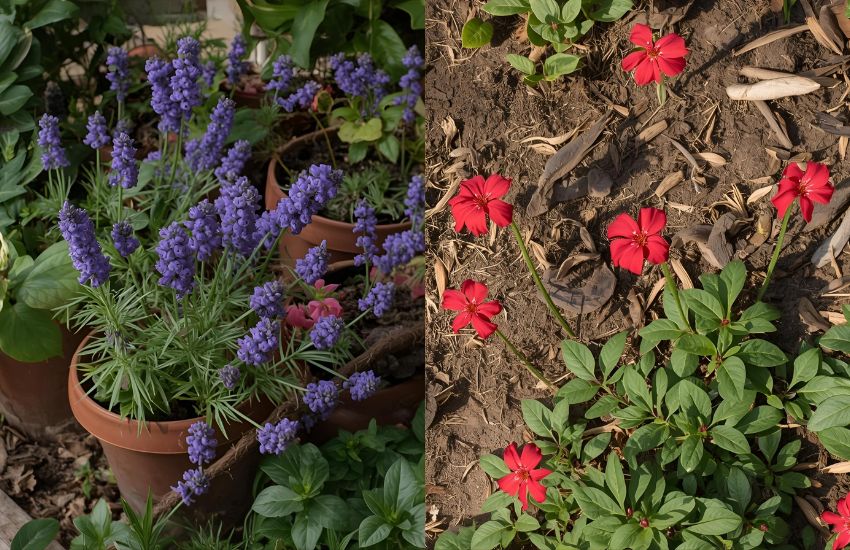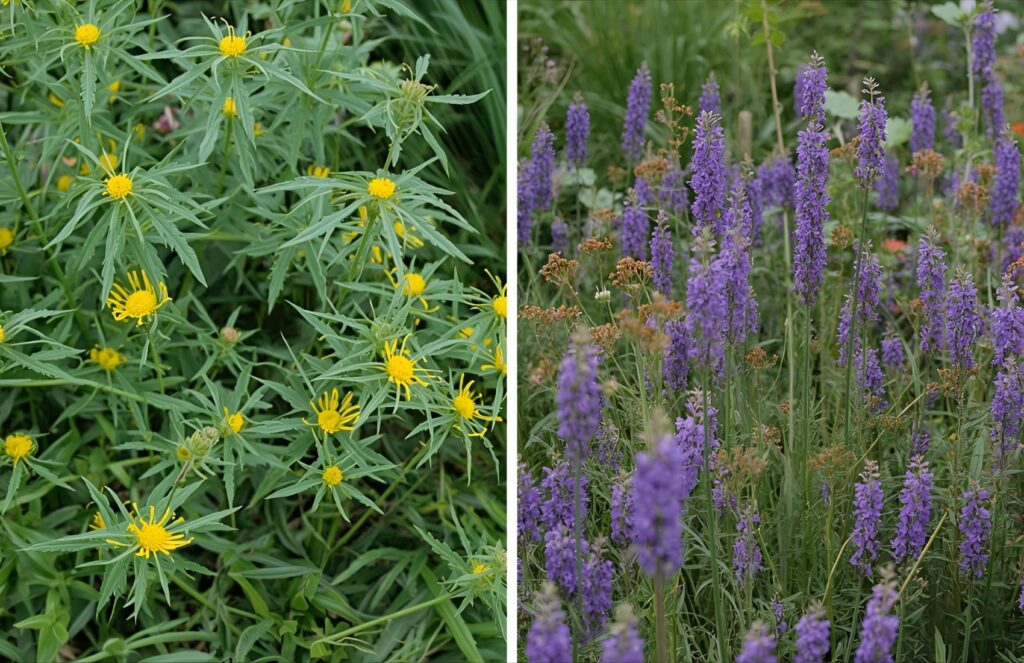Understanding the difference between annual and perennial plants is essential for any gardener aiming to create a thriving and vibrant garden. Annual plants complete their entire life cycle from seed to bloom to seed—within one growing season, meaning they bloom for a shorter time but often produce spectacular color throughout that season. In contrast, perennial plants live for several years, going dormant after the first frost and returning year after year with new growth and blooms. This difference between annual and perennial plants influences how you plan your garden, choose your plants, and manage their care.
The difference between annual and perennial plants lies in their life cycle. Annual plants complete their life cycle in one growing season, blooming once before dying. Perennial plants live for multiple years, returning each season with new growth and blooms, providing lasting color to your garden.
As a gardener, knowing the unique characteristics of annuals like petunia, impatiens, or lantana, and popular perennials such as daylilies, coneflowers, and peony can help you balance shorter blooming periods with long-term beauty. This guide will explore the life cycle, hardiness, and bloom times of annual and perennial plants, discuss biennials, and offer practical tips on planting annuals and caring for perennial flowering plants. By the end, you’ll be equipped to select and nurture the right types of plants to add lasting color and low-maintenance foliage to your outdoor garden.
Choosing Annuals and Perennials: What Every Gardener Should Know

Choosing annuals and perennials is a fundamental step in creating a vibrant and lasting garden, and this gardener’s guide will help you understand the differences and make informed decisions. To choose plants wisely, you first need to learn the difference between annual and perennial plants. Annuals complete their life cycle within a single growing season, blooming from spring to fall and then dying, unlike perennials that live for several years, regrowing every spring and returning each year to provide blooms and foliage. Understanding the differences is crucial because annuals die after one growing season, while common perennials survive the winter and come back year after year, making them cost-effective in the long run.
When choosing annual and perennial plants, consider your garden design and how a mix of annuals and perennials can provide staggered bloom times and color all season long. Annuals are often used in hanging baskets and flower beds to add immediate color throughout the growing season, while perennials form the backbone of your garden with their ability to regrow every spring. Don’t overlook tender perennials, which may need special care or protection to survive harsh winters. Additionally, biennial plants, which complete their life cycle in two years, offer unique options with blooms in the second year.
Knowing your hardiness zone and reading plant tags carefully will help you select perennials for your garden that can survive the winter and thrive year after year. Whether you grow from seeds or transplants, mixing annuals and perennials will ensure your garden remains full of life, from early spring until the first frost. This balanced approach will help you create a beautiful, low-maintenance garden that blooms all season and offers a dynamic display of color and texture.
How to Mix Annuals and Perennials for Year-Round Bloom

Creating a garden that blooms continuously throughout the year requires a thoughtful blend of annual and perennial plants. By mixing these plants effectively, you can add vibrant color to your garden and enjoy a dynamic display of flowers from early spring until the first frost. Annual plants, such as pansy, vinca, and dahlia, are often chosen for their bright, immediate blooms and ability to provide color during the growing season. Perennials, on the other hand, live for multiple years and may bloom at different times, ensuring your garden remains lively even as annuals fade.
Planning Your Flower Beds
When designing flower beds, consider how the bloom times of your chosen plants will overlap. Perennials may start blooming later in the season, so pairing them with early-flowering annuals helps fill gaps and extend the overall blooming season. Some plants are often used to add texture and variety, such as dahlias for dramatic late-season color or pansies for cooler weather near the first frost. This approach will help you choose plants that complement each other and maintain visual interest throughout the year.
Maximizing Garden Color
To maximize color to your garden, select plants that thrive in the same conditions. For example, mixing annuals and perennials that prefer full sun will create a cohesive and healthy flower bed. Similarly, if your space is shaded, opt for shade-tolerant varieties to ensure all plants flourish. Remember, perennials may produce seeds that allow them to spread naturally, while annuals complete their life cycle in one season and need replanting. By understanding these traits, you can better plan your garden for continuous, vibrant blooms until the first frost.
Conclusion
In conclusion, understanding the difference between annual and perennial plants is key to cultivating a thriving and vibrant garden that offers beauty throughout the seasons. Annuals provide stunning, immediate color during a single growing season, while perennials bring lasting charm by returning year after year with fresh blooms and foliage. By carefully choosing and mixing annuals like dahlia with hardy perennials, you can create a balanced garden that blooms continuously from early spring until the first frost. Knowing your hardiness zone and planning your flower beds with complementary bloom times will help you maximize color and maintain a low-maintenance garden.
Start planning your garden today by selecting the right combination of annuals and perennials to achieve year-round bloom and lasting beauty. Transform your outdoor space into a flourishing haven that delights season after season!
Frequently Asked Questions (Gardener’s Guide: What’s the Difference Between Annual and Perennial Plants?)
What is the meaning of perennial plant?
A perennial plant is a type of plant that lives for more than two years, often growing and blooming season after season. Unlike annuals, which complete their life cycle in a single year, perennials regrow from the same roots each year, providing long-term greenery and flowers.
Is annual or perennial better?
Whether an annual or perennial is better depends on your goals. Annuals bloom quickly and provide vibrant color for one season, ideal for instant impact. Perennials return year after year, offering long-term structure and lower maintenance. Choose based on patience, effort, and the seasonal effect you desire.
What is the difference between annual and perennial indoor plants?
Annual indoor plants complete their life cycle in one year, growing, flowering, and dying within a single season. Perennial indoor plants live for several years, producing new growth and blooms repeatedly. Annuals offer quick results, while perennials provide long-term enjoyment and require less frequent replacement.
What is the difference between a perennial and an annual plant?
An annual plant completes its life cycle germination, flowering, seed production, and death within one growing season, requiring replanting each year. A perennial plant lives for multiple years, often flowering and producing seeds repeatedly, making it a longer-lasting, low-maintenance option for gardens and indoor spaces.
